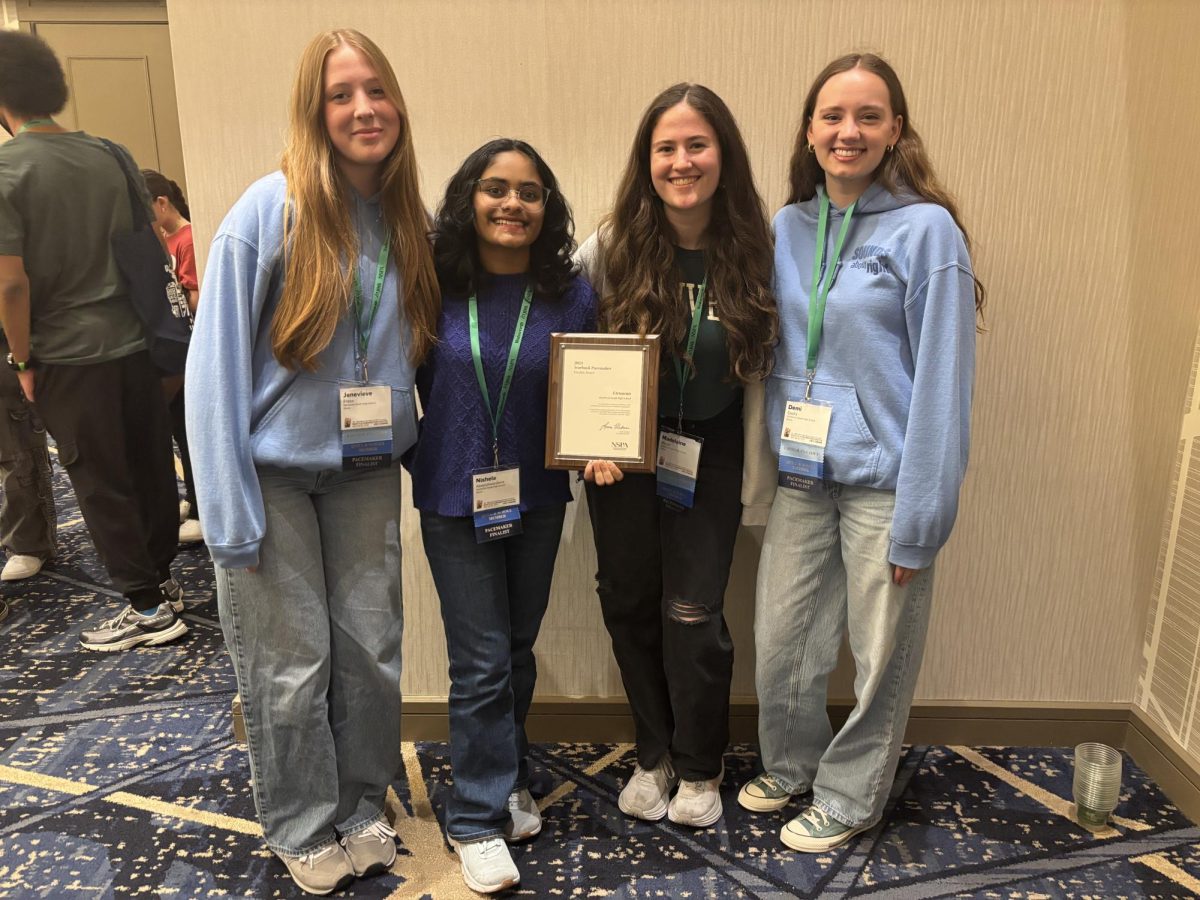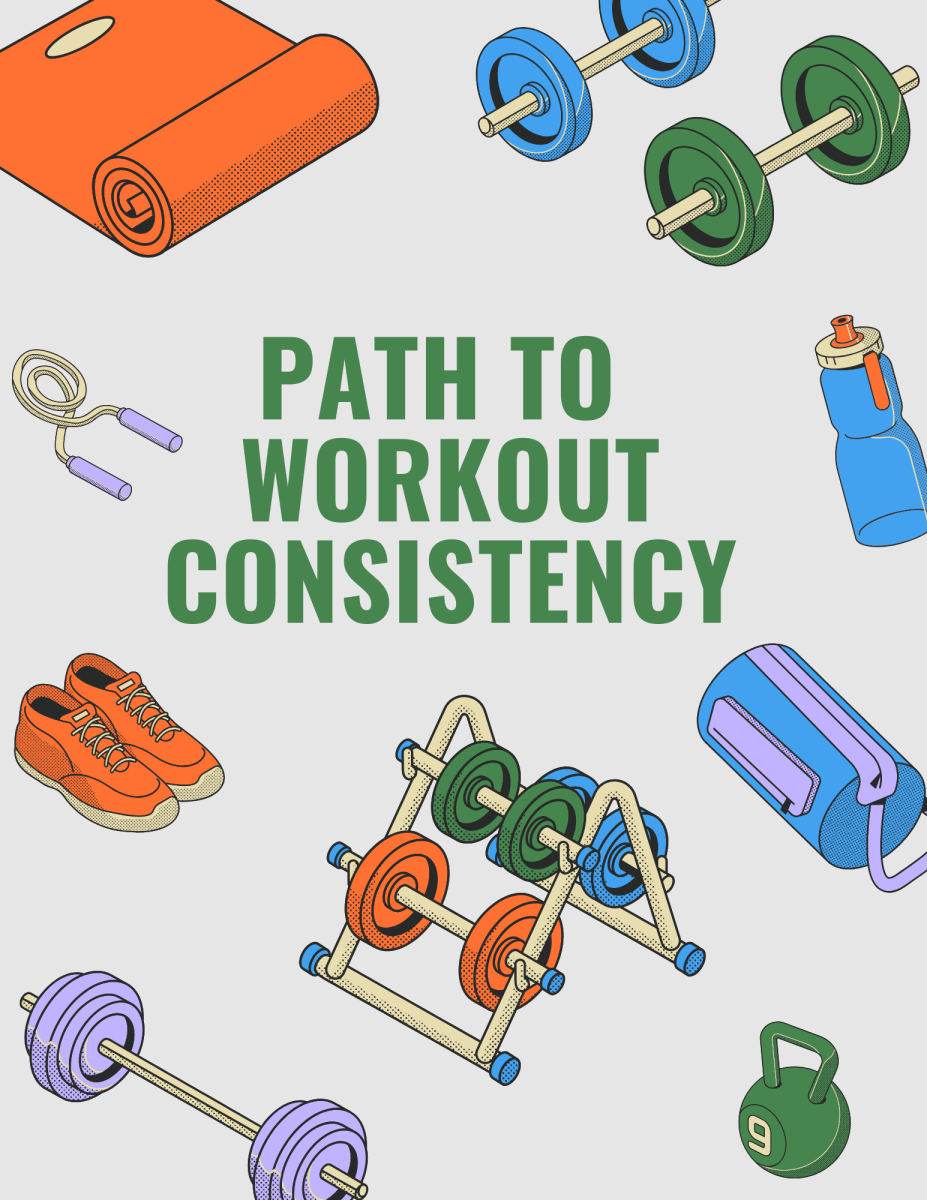As part of a district-wide pilot to test the effectiveness of new technology in the classroom, six classes at South received Google Nexus 7 tablets and Google Chromebook laptops Jan. 29.
According to Principal Dr. Brian Wegley, the pilot was initiated by David Jakes, instructional technology coordinator; Ryan Bretag, Jakes’ counterpart at North; and Superintendent Dr. Mike Riggle. Jakes said that a South committee consisting of himself, technology trainer Lisa Sly, participating teachers, librarians and instructional coaches has been meeting since midway through the first semester to plan the pilot.
Cameron Muir, associate principal of curriculum and instruction; Kris Frandson, Muir’s counterpart at North; and Rosanne Williamson, associate superintendent for educational services, were also involved in the planning process. Muir said that the pilot discussion originated from the debate over electronic versus traditional textbooks.
“From there it became apparent that the electronic textbook discussion really couldn’t be discussed without, logically, the question of the device and how students would be accessing those electronic textbooks,” Muir said. “[…] The question of the device became a topic and what would happen if we went with one device […] to a situation where a student can have any device.”
Once the pilot was proposed, teachers in the district were asked to volunteer to participate. The six teachers from South that will implement it are David Lieberman, Science; Christina Cosgrove, World Languages; Matthew Hamilton, Special Education; Scott Glass, English; Kimberly Kiraly, Family and Consumer Science; and Elizabeth Bushek, Math.
The pilot will last for 12 weeks, with classes testing out one device for six weeks before switching to the other. After those 12 weeks, Jakes explained that he and Bretag will make a recommendation to Riggle and the Board of Education about whether or not to pursue the use of these technologies in future school years. He is unsure when a school-wide implementation of the pilot would take place.
“It could be next year if it’s successful; it could be a year later; it could be maybe we don’t do it even if it is successful,” Jakes said. “We’re hoping to have a great experience and say, ‘Look, this is compelling enough, this is so compelling that we have to do this,’ and then it becomes, ‘How do we do that at scale?’ […] It’s one thing for six teachers. It’s a whole different thing when you’re talking about the entire school.”
In order to evaluate the success of the pilot, a team at South will conduct frequent classroom observations under the Instructional Practices Inventory (IPI) method of measuring student engagement, according to Jakes. North’s observations will be conducted under a different method in order to gain different perspectives, Jakes said.
“[At South], the team comes to the classroom, spends about two or three minutes observing the classroom, interviews students if they need to, and we can then take a look at, on [a] sliding scale, what level of engagement the kids are at,” Jakes said. “If you’re watching a demonstration of some calculus problem, that’s one thing, but if you’re actually doing it and processing that and asking questions, it’s a different level of engagement.”
According to Jeffrey Rylander, instructional supervisor of the Science Department, the teachers in the pilot do not have a set plan for how to use the devices in the classroom. Rather, the pilot is designed so that students will play a large role in integrating the technology within the specific subjects.
“In any kind of a pilot […], the purpose of it is to really learn and evaluate and have the kids teach us, get [students] to help us figure this out,” Rylander said. “I think as [students] play with it and experiment with it, we’re going to learn a ton. Some of that is going to […] help us evaluate whether this is a direction that we want to go as a school or not.”
Cosgrove plans on using the devices in her Spanish 363 class. According to her, she has never taught with such interactive technology before, but she does have some idea of how she will incorporate it into the subject matter. She plans on having students record and listen to themselves speaking Spanish to correct their mistakes along with taking online quizzes to generate immediate feedback.
“I want to make sure that we use these devices in a really meaningful, effective way and not just [use] them just to say we used them in the classroom,” Cosgrove said. “I want to make sure that it’s really meaningful, [and that] we’re using it because this is a perfect way to learn what we’re learning that day.”
According to Muir, the district has been in contact with other school districts to discuss data and uses involving different types of devices in the classroom. He said that District 225 is the first one to his knowledge that is implementing solely Google products.
Ari Marbán, a senior at Stevenson High School, has had an Apple iPad for the entire school year for her Anatomy class. She says that the school gave out iPads to select classes, but that it also has iPad carts available to rent out. According to Marbán, she enjoys the different activities she can do on her tablet to add a deeper level to her understanding.
“We have apps that quiz us; one of them is for muscles, one of them is for bones, and so on,” Marbán said. “We [also] have to download certain readings or texts or instructions to labs, and you can highlight them on your iPad, and we’re [also] doing a project [making] a keynote presentation and a whole movie on our iPad.”
Jakes said that the two specific devices were chosen partially because the district is comfortable paying the prices, as the Nexus 7 costs $199 and the Chromebook costs $249 with an additional management fee.
“We’re heavily tied into Google Apps for education,” Jakes said. “I think between North and South right now, we’re looking at right around 55,000 Google Docs that have been created, and that’s not even including presentations, spreadsheets and those things. […] We want to recognize that and honor that and continue to build our capacity there, so that’s where those devices come in.”
A smaller pilot was also conducted during summer school involving English teacher Afrodite Skaouris. Skaouris’ junior and senior English classes used the students’ own devices to read the play Waiting for Godot. Skaouris found that the technology was very beneficial in her classroom setting.
“One of the biggest benefits I saw in having a ‘bring your own device’ […] was that [students] were able to have a conversation with the text in the sense that if they didn’t know something, they could easily Google it,” Skaouris said.
According to Skaouris, it required a change in her teaching technique to adjust to having each student in her room on a device.
While the constant threat of distraction added another layer of responsibility on the students, she said she had to sit at the back of the classroom instead of the front to monitor her students’ activity on their individual devices.
According to Muir, he hopes that the pilot will answer the series of questions that were brought up in the first meeting and will eventually provide a route for the district to go in.
“The idea [is] do the devices being present in the classroom […] allow for not different kinds of instruction, but again, an enhancement to the instruction?” Muir said. “Does it revolutionize? Does it enhance? Does it change things up a little bit and make things easier or a little more powerful? Does it make things more accessible? Those are the kind of questions that we have.”











